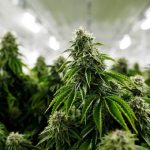U.S, May 18, 2020 (CANNABISTECH) Cannabinoid science and technology show unlimited potential in personalized medicines.
Over the last 50 years, progress in technology has allowed for the commercial separation of sample materials down to their unique compounds. While cannabis may have DNA as a street drug, today, many consumers can daily rely on pharmaceutical-grade, cannabis-derived personalized medicine.
Personalized Medicine Requires Reliable Trials
How did cannabis’s transition from weed to resource come to be? Well, like most commercial medicines, it started with research. Currently, hemp is legally federally, and several states are coming around on cannabis. However, at the beginning of the push, defining the progression, were the trials proving CBD’s efficacy in treating epileptic conditions. Due to this research, in 2018, Epidiolex became one of the first cannabis-derived medicines approved by the Food and Drug Administration(FDA).
Since then, research has grown in all jurisdictions of cannabis study, notably the worlds of terpenes and flavonoids. Additionally, our understanding of the vast amount of different cannabinoids continually improves as well. Decoding the potential contained within these compounds is an incredibly complicated job that will take researchers decades, but luckily the market provides more options.
Several independent companies are performing surveys and collecting user reports through dosage tools to organize information. While not exactly the ideal environment for research, the work done by these companies reflects the standards upheld by the research community. Such data reports:
- How much a user took of a product
- How they did so
- The effects of the substance
- How long it lasted
Most companies require users to scan the certificate of analysis attached to a product to verify it was purchased. Such information is empowering to the data-literate consumer because it allows them to make powerfully informed decisions.
WAIT FOR STUDIES TO BACK UP MOST PERSONALIZED USE
While the FDA was relatively willing to consider the case of those with epilepsy, proving cannabis as an anti-anxiety or anti-nausea is going to be a harder battle. There’s supposedly no life or death stress towards helping those who have a mental illness, so its unlikely progression will happen quickly within the traditional power structure. With that in mind, returning to the data published by individual companies is crucial.
Whether it be Leafly’s breakdown of each strain’s terpenes on their website or StrainPrint’s millions of user reports, consumers have a wealth of information available to start with. While it may not seem immediately useful, terpene profiles teach you a lot about the effects and feel of a cannabis strain. For example, many researchers found caryophyllene to protect against nervous system-related disorders such as pain and depression.
Several exciting studies exist on CBN, pinene, and all of the other cannabis compounds, but the best way to find a proper dose is, unfortunately, through trial and error. Contribute to the growing set of datapoints today by reporting your own experience with verified cannabis products, or at least keep a journal. That way, by looking up the lab results of each product before you try it, you can record your reactions and learn how the different forms of cannabis affect you. Hopefully, researches will know enough in the future so that doctors can be taught which strains to recommend for your use, but until then, we’re left relying on friends and personal experience.
ALL MEDICINAL CANNABIS STEMS FROM STERILIZED PRODUCTION
If it weren’t for clean cannabis, then there would be no legal cannabis. People who use marijuana to treat conditions such as wasting disorder require the cleanest samples available, as even light exposure to a pathogen can be disastrous for those at risk. For the medicinal cannabis world to exist, ethical farmers with clean sites have to be at least a sizable minority of the industry.
The same is true for any immunocompromised individual who is medicating with any sort of cannabis-derivative. Each step, from bud to extract or isolate, must be done in a sterile environment without exposure to outside contaminants. If these standards couldn’t be met, then cannabis treatment would be involved in too many deaths to be equitable.
Luckily, the cannabis industry efficiently delivers high-quality cannabis fit for medical consumption. Both farmers and extractors expertly perform their tasks to bring the best products they can to market.
RESEARCH, CLEANLINESS, AND PROFESSIONALISM CREATED THIS INDUSTRY
Decades ago, no one sitting in an Alabama home was thinking about cannabis legalization happening in their state. Now they have a medical cannabis bill. This progress from civilianized substance to essential medicine occurred through the work of activists in every vector, from legal to business. However, all of that activism would have fallen flat without the science to stand on. In memory of all of cannabis’s victories up this point, keep reading, keep researching, and keep spreading the word. If this is your personalized medicine choice, make sure to raise your voice.






